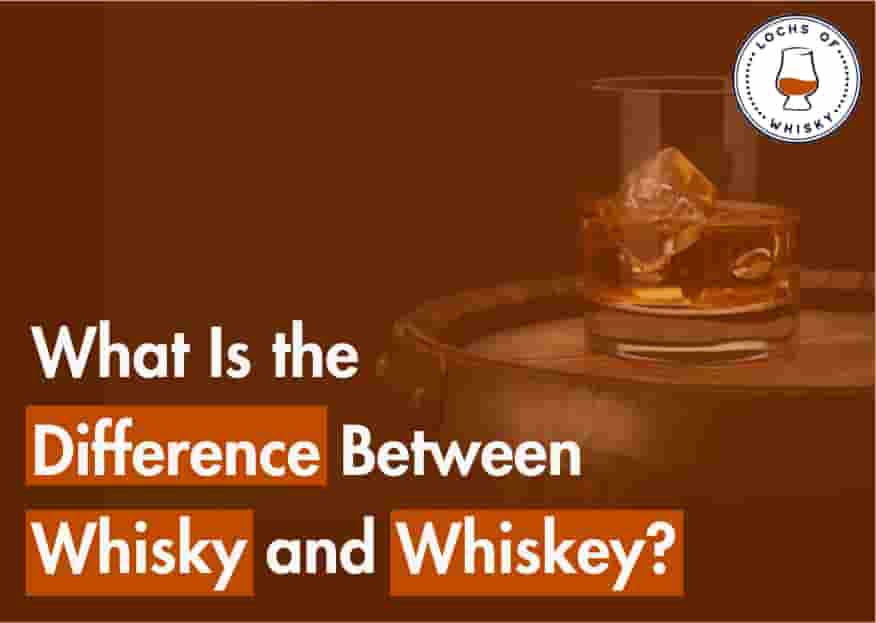
In the spirited world of distilled beverages, few distinctions stir as much intrigue and debate as the variance between whisky and whiskey. While both libations share a common heritage and production process, their subtle disparities unveil rich narratives of tradition, geography, and taste. Let's unravel the enigmatic nuances that set whisky and whiskey apart.
Is whisky and whiskey the same thing?
The divergence between whisky and whiskey begins with their etymology. As elucidated by historical accounts, "whisky" traces its origins to Scotland and Canada, where the spirit is revered as an emblem of tradition and craftsmanship. Conversely, "whiskey" finds its linguistic roots in Ireland and the United States, embodying a legacy of innovation and heritage.

Countries that make Whisky
- Scotland
- Canada
- Japan
- Australia
- South Africa
- Most European Union countries (including France, Germany, and Spain)
Countries that make Whiskey
- Ireland
- United States
- Some Mexico-based producers
Is the spelling the only difference?
No. Ultimately, the disparate ingredients, production methods, and regional terroirs converge to shape the distinct flavour profiles of whisky and whiskey. Scotch whisky is renowned for its smoky, peaty nuances intertwined with heather, honey, and dried fruit notes. In contrast, Irish whiskey embodies a mellower, smoother palate with hints of vanilla, caramel, and toasted oak.
Read on for a brief summary of the heritage of whisky and whiskey, after they crossed the seas from Scotland and Ireland, and eventually arrived at worldwide adoration.

American Whiskey
Whiskey distillation has deep roots in the United States, dating back to at least the late 1700s with the arrival of Irish and Scottish immigrants. Initially, both spellings of whiskey - with or without the "e" - were accepted. In a notable historical instance, an early ration agreement penned by Founding Father, Alexander Hamilton, called the spirit "whisky."
However, the influx of Irish immigrants during the 1800s led to the predominance of the "whiskey" spelling. Consequently, various American-style whiskeys emerged, encompassing corn-based bourbon, charcoal-filtered Tennessee whiskey, rye whiskey, and American single malt - each spelling "whiskey." With that said, notable exceptions exist, such as Maker's Mark Bourbon Whisky, which famously omits the "e" on its bottle.
As above, American whiskey encompasses:

Canadian Whisky
Canadian whisky, often recognized for its higher rye content and unique blending practices, offers a less defined category than others. While the reason for the "whisky" spelling mission in Canadian whisky remains unclear, its influences stem from American and European traditions. Canada's historical ties to Europe, notably Scotland, may offer insights into its naming convention, reflecting the country's diverse cultural heritage.
Indian Whisky
Scotch whisky gained popularity in India during the 19th century under British colonial rule. Indian whisky, historically made with a blend of molasses-derived spirits and a small whisky component, lacked the strict regulations governing Scotch or Irish whiskey.
Japanese Whisky
Japanese whisky shares a spelling - and striking similarities - with Scotch whisky, a connection stemming from historical events. Masataka Taketsuru, fascinated by Scotch distillation, travelled to Scotland in 1918 to study organic chemistry. Upon returning to Japan, he established the Suntory Yamazaki distillery in 1929, followed by his own distillery, Yoichi, in 1934.
Where to find the best Whisky and Whiskey
So, now you know that there’s much more to the difference than just the spelling! All that reading has built up quite a thirst. Fancy a dram? There’s a whole world of whisky and whiskey out there to explore. Find yours at Lochs of Whisky.

 Chat with us on WhatsApp
Chat with us on WhatsApp


Comments